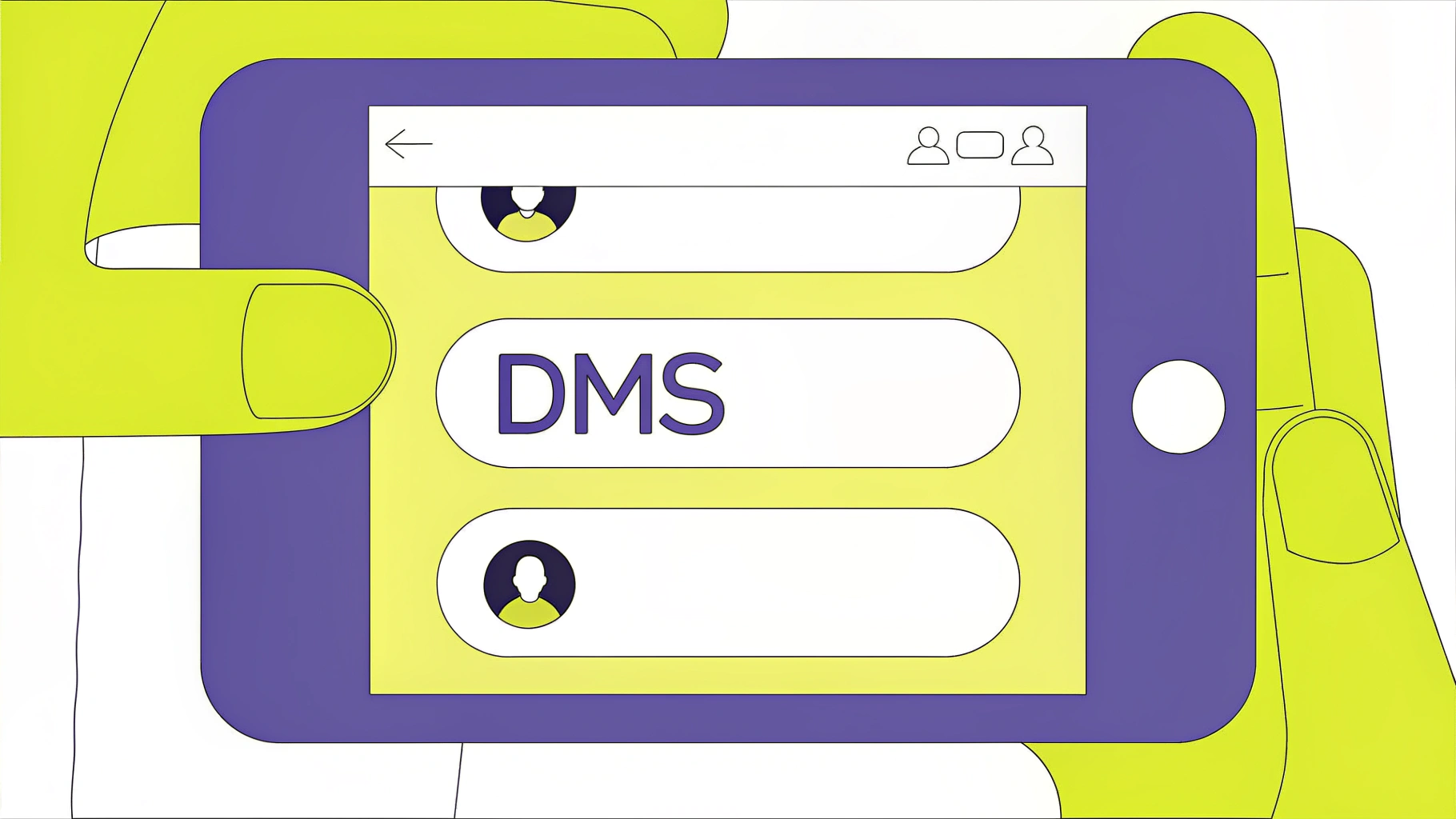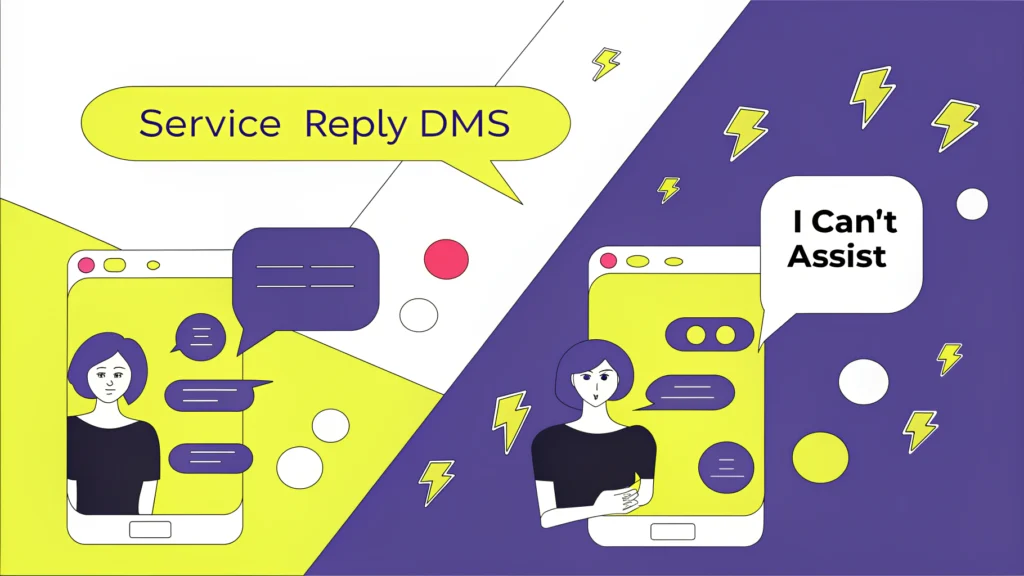Overview
The article asserts that improving engagement in service reply DMs requires brands to steer clear of dismissive or overly formal language, as such communication can alienate customers and jeopardize relationships. It underscores this point by illustrating that personalized, empathetic communication not only fosters trust but also enhances satisfaction. Conversely, poor messaging can trigger frustration and erode client loyalty. Brands must recognize that the language they use significantly impacts customer perceptions and interactions.
Introduction
In an increasingly digital world, service reply direct messages (DMs) have emerged as a crucial lifeline for brands aiming to engage effectively with their customers. This intimate form of communication not only addresses inquiries and resolves issues but also fosters trust and connection. However, the language employed in these exchanges can significantly influence the customer experience.
What are the consequences when brands miss the mark with their messaging? Understanding the pitfalls of what not to say in service reply DMs is essential for enhancing engagement and building lasting relationships. Poor communication can lead to frustration and diminished loyalty, making it imperative for brands to refine their messaging strategies.
Define Service Reply DMs and Their Role in Customer Engagement
Service reply DMs, or direct messages, represent a vital communication channel between companies and their clients on social media platforms. They serve as an essential link for service, enabling companies to address inquiries, resolve issues, and provide tailored assistance. Unlike public comments, DMs create a more intimate interaction, fostering a sense of connection and trust.
In today’s digital landscape, consumers expect prompt and efficient responses. Consequently, the importance of service reply DMs has surged, significantly enhancing customer engagement and satisfaction. When integrated with social media initiatives such as sweepstakes, contests, and partnerships, DMs can further amplify community engagement. For example, during a contest, companies can utilize DMs to follow up with participants, gather feedback, and cultivate lasting relationships.
By leveraging these campaigns, Fresh Content Society empowers companies to drive participation effectively. They utilize DMs to nurture relationships, gather insights, and build trust, ultimately contributing to sustainable social media growth. This strategic approach not only enhances customer satisfaction but also positions companies for long-term success in a competitive digital environment.

Examine the Importance of Language in Direct Messaging
Language plays a crucial role in direct messaging; it significantly influences how individuals perceive a brand. Understanding what not to say in service reply DMs is crucial, as the tone, choice of words, and overall communication style can either foster a positive relationship or create barriers. For instance, employing compassionate language can reduce tense situations, while what not to say in service reply DMs, like excessively formal or technical jargon, may distance clients. Brands must aim for a conversational tone that reflects their personality while remaining professional. This approach not only enhances the client experience but also fosters ongoing engagement and loyalty.
To establish a strong connection with clients, it is essential to recognize the impact of language. By choosing words that resonate with the audience, brands can create a more inviting atmosphere. It’s important to understand what not to say in service reply DMs when considering the difference between a cold, technical response and a warm, empathetic reply. The latter can turn a potentially negative interaction into a positive experience, demonstrating the power of language in building relationships.
In conclusion, brands should prioritize a conversational approach in their messaging. This strategy not only improves client experience but also cultivates loyalty and engagement. By understanding the nuances of language, brands can effectively communicate their values and connect with their audience on a deeper level.

Identify Common Mistakes in Service Reply DMs
Frequent mistakes in service reply DMs illustrate what not to say in service reply DMs, which can significantly undermine client relationships. Using dismissive language, such as ‘I can’t assist with that’ or ‘Please hold,’ is an example of what not to say in service reply DMs, as it irritates clients and fosters negative perceptions of the brand. In fact, 76% of individuals become frustrated when companies fail to provide personalized interactions. Generic replies that neglect personalization are what not to say in service reply DMs, as they can make clients feel undervalued.
To combat this, brands must acknowledge each individual’s unique situation and respond with tailored solutions. Amanda Austin emphasizes the importance of understanding clients’ needs to alleviate their pain points. Avoiding what not to say in service reply DMs is essential for maintaining a positive brand image and fostering client loyalty. Personalization in DMs not only enhances client satisfaction but also significantly influences loyalty; 71% of individuals expect tailored experiences and feel frustrated when they do not receive them.
Moreover, 90% of purchasers state that a prompt reply is essential for support inquiries, underscoring the necessity of timely and personalized interactions. By implementing these strategies, brands can transform their client communications and create a more engaging, supportive environment.

Analyze the Impact of Poor DM Communication on Customer Relationships
Ineffective communication about what not to say in service reply DMs can significantly undermine client relationships. When clients perceive that their concerns are overlooked or misinterpreted, it highlights what not to say in service reply DMs, which leads to discontent and a decline in trust towards the company.
A lack of timely responses, for example, often drives clients to explore alternatives, ultimately jeopardizing their loyalty. Moreover, negative experiences shared on social media can tarnish a company’s reputation, underscoring the necessity for businesses to prioritize effective communication strategies.
By fostering open and responsive dialogue, brands can not only strengthen their relationships with customers but also enhance overall satisfaction. This approach is not merely advisable; it is essential for sustained success.

Conclusion
Service reply DMs are a cornerstone of effective customer communication, playing a critical role in fostering connections and enhancing engagement. Understanding what to avoid in these interactions allows brands to cultivate a more positive and personalized experience for their clients, ultimately leading to stronger relationships and increased loyalty.
Key insights from the discussion underscore the significance of language and personalization in service reply DMs:
- Dismissive or generic phrases can alienate customers;
- Conversely, a warm, conversational tone fosters trust and satisfaction.
- Timely responses and tailored solutions are essential for addressing customer concerns and ensuring that clients feel valued.
In a competitive digital landscape, prioritizing effective communication strategies in service reply DMs is essential for long-term success. Brands must reflect on their messaging practices, actively seeking to improve engagement by avoiding common pitfalls. This approach creates a supportive environment that not only meets but exceeds customer expectations, ultimately driving sustainable growth and loyalty.
Frequently Asked Questions
What are service reply DMs?
Service reply DMs, or direct messages, are a communication channel on social media platforms that allows companies to interact privately with their clients, addressing inquiries, resolving issues, and providing tailored assistance.
How do service reply DMs enhance customer engagement?
Service reply DMs create a more intimate interaction compared to public comments, fostering a sense of connection and trust. They allow companies to respond promptly and efficiently to consumer inquiries, significantly enhancing customer engagement and satisfaction.
In what ways can companies utilize DMs during social media initiatives?
Companies can use DMs during initiatives such as sweepstakes and contests to follow up with participants, gather feedback, and cultivate lasting relationships, thereby amplifying community engagement.
How does Fresh Content Society utilize service reply DMs?
Fresh Content Society empowers companies to drive participation by leveraging DMs to nurture relationships, gather insights, and build trust, contributing to sustainable social media growth.
What are the long-term benefits of using service reply DMs?
By enhancing customer satisfaction and fostering trust, service reply DMs position companies for long-term success in a competitive digital environment.

